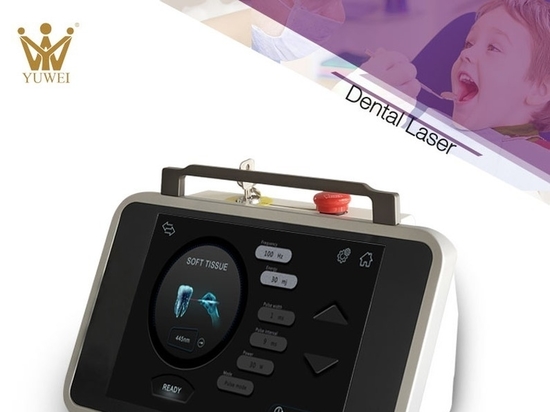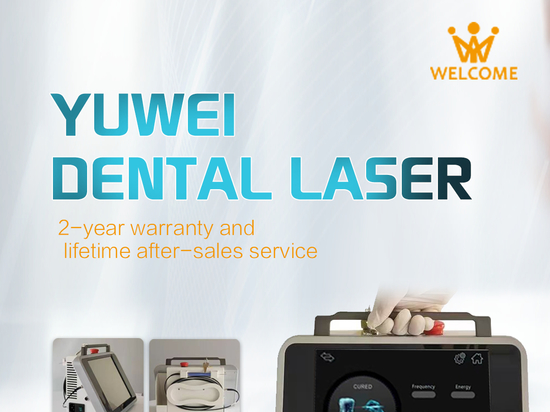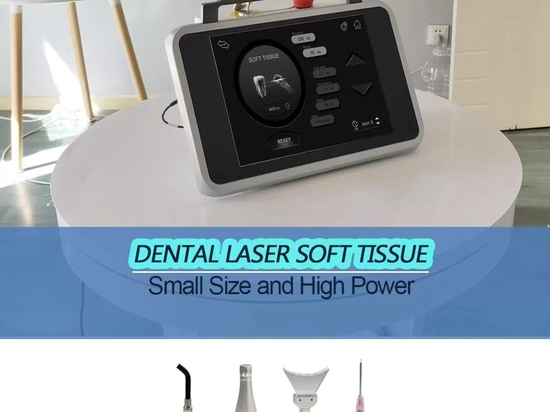
#Industry News
Application of Dental Lasers in Pediatric Dentistry
Dental laser technology significantly enhances pediatric dental care. With painless procedures, reduced bleeding, and faster recovery, it offers a safer and more comfortable experience for children.
Introduction
With the continuous advancement of technology, the dental field is rapidly evolving. Dental laser technology, as an emerging treatment method, is gradually transforming traditional dental treatments. In pediatric dentistry, the application of dental lasers brings numerous benefits to young patients. This article explores the application and advantages of dental lasers in pediatric dentistry.
Basic Principles of Dental Lasers
Dental lasers use high-energy light beams to cut, coagulate, or remove oral tissues. Depending on the wavelength and energy level, lasers can be used to treat various oral issues such as cavities, gum disease, and oral ulcers. Dental lasers are classified into soft tissue lasers and hard tissue lasers, each used on different oral tissues like gums and teeth.
Application of Dental Lasers in Pediatric Dentistry
Cavity Treatment
Children are prone to cavities due to their dietary habits and underdeveloped oral hygiene practices. Traditional cavity treatment often involves the use of drills, which can cause discomfort and fear in children. Dental lasers, however, can remove cavities with little to no pain, reducing fear and facilitating smoother treatment.
Gum Disease Treatment
Children's gums are still developing, making them susceptible to gingivitis. Dental lasers can precisely remove infected gum tissue and promote the growth of healthy tissue. Laser treatment for gum disease reduces bleeding and lowers the risk of postoperative infection, making it particularly suitable for young patients.
Treatment of Dental Developmental Abnormalities
In some cases, children's teeth may develop abnormally, such as the presence of extra teeth or difficulty in tooth eruption. Dental lasers can help correct these issues through minimally invasive surgery, avoiding the trauma and complications that might occur with traditional surgery. Laser procedures have smaller incisions and faster recovery times, allowing children to return to normal activities more quickly.
Soft Tissue Surgery
Common oral soft tissue issues in children, such as short frenulum or oral ulcers, can be treated with dental lasers. Lasers can precisely cut or adjust soft tissue, reducing bleeding and pain. Compared to traditional surgery, laser treatment is safer, more efficient, and offers shorter recovery times.
Advantages of Dental Lasers
Painless or Low-Pain
The biggest advantage of dental laser treatment is its low-pain characteristic, especially suitable for children sensitive to pain. Lasers can seal nerve endings during treatment, reducing discomfort for the patient.
Reduced Bleeding and Infection
Lasers have a coagulation effect, sealing blood vessels while cutting tissue, significantly reducing intraoperative and postoperative bleeding. Additionally, lasers have antibacterial properties, lowering the risk of postoperative infection.
Small Incisions and Quick Recovery
Laser treatments create small incisions and can precisely target the affected area without harming surrounding healthy tissues. Therefore, postoperative recovery time is significantly shortened, allowing children to resume normal activities sooner.
Little or No Anesthesia Required
Since dental laser treatment is nearly painless, it often requires no or only minimal local anesthesia, reducing children's fear of treatment and the potential side effects of anesthesia.
Conclusion
The application of dental laser technology in pediatric dentistry offers significant benefits to young patients. Whether in cavity treatment, gum disease management, or handling soft tissue issues, dental lasers demonstrate advantages that traditional methods cannot match. As dental laser technology continues to develop and become more widespread, pediatric dental treatments will become safer, more comfortable, and more efficient. For parents and dentists, understanding and applying dental laser technology will help provide better oral health care for children.





